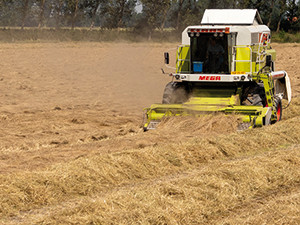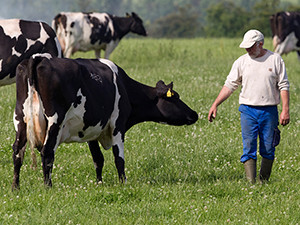A healthy balance between supply and demand for turf grasses and improved situation for forage grasses
Seed farmers in northern Europe have had a disappointing season. Although early spring gave Danish crops a good head start, the late-spring drought put too much stress on growing plants in the run-up to harvest. For later crops, unstable weather produced variable yields and harvest-time losses.
04/10/2016
Denmark’s lowest seed harvest for several years
 The worst affected grass species was smooth-stalked meadow grass. Yields in short-turf varieties were especially low. Yields of perennial ryegrass are also below average, and those of cocksfoot, tall fescue and red fescue are way below average. The only positive result is white clover: sunny weather improved pollination levels and led to a better-than-average harvest.
The worst affected grass species was smooth-stalked meadow grass. Yields in short-turf varieties were especially low. Yields of perennial ryegrass are also below average, and those of cocksfoot, tall fescue and red fescue are way below average. The only positive result is white clover: sunny weather improved pollination levels and led to a better-than-average harvest.
In Holland,the harvest is also down in perennial ryegrass and tall fescue, but for a different reason: wet weather at the end of the growing season.
In North America,growers in the west report lower-than-average grass yields, while Canadian farmers did well with grasses and badly with alfalfa.
A healthy balance in the turf market
 Turf consumption has been good in both the consumer and professional segments. Although spring came late, we saw how an improving economy has boosted activity in construction and infrastructure, which in turn, led to increased demand for turf in both northern and southern Europe.
Turf consumption has been good in both the consumer and professional segments. Although spring came late, we saw how an improving economy has boosted activity in construction and infrastructure, which in turn, led to increased demand for turf in both northern and southern Europe.
Importation of US turf species further declined in the face of a stronger USD exchange rate. Smooth-stalked meadow grass and hard fescues are still short and very firm in price, especially the elite, highly technical varieties. Red fescue prices also firmed through good consumption and reduced availability.
In general, we see a healthy balance between supply and demand, which is why the outlook for the 2016/17 season looks positive as consumption continues to increase.
The outlook for the forage market also looks good
 A mild winter and reduced dairy-farm incomes have led to disappointing levels of consumption of recommended forage grasses. Milk prices in June were the lowest we have seen in many years. Since then, however, prices have increased in small steps.
A mild winter and reduced dairy-farm incomes have led to disappointing levels of consumption of recommended forage grasses. Milk prices in June were the lowest we have seen in many years. Since then, however, prices have increased in small steps.
Industry experts now believe that demand could exceed supply by end of this year. If things do indeed work out that way, milk prices should continue to firm. At the same time, dairy farmers are focused on cutting their costs, an approach that favours grass-based farms.
The combination of improved sentiments in the dairy sector and a reduced acreage in Denmark and Holland (the main producers of forage species) should result in a good balance between supply and demand soon. The exceptions are timothy, for which Canadian availability has improved, and cocksfoot, which remains in short supply. We are working to correct this.
The EU greening programme continues to have an effect. Consumption of Italian and Westerwoldicum ryegrasses has been as good as it was last year. Prices are even firming. Stocks were already low before the season started, so it was a challenge to get the new harvest ready for the summer campaign. Unfortunately, poor harvest-time weather reduced the yield of these species in eastern Germany and central Europe.
Find out more
This is just a brief summary of the grass seed market. To learn more about market trends and opportunities, talk to your local DLF representative. They will be delighted to help.
